Carnival life in 3D
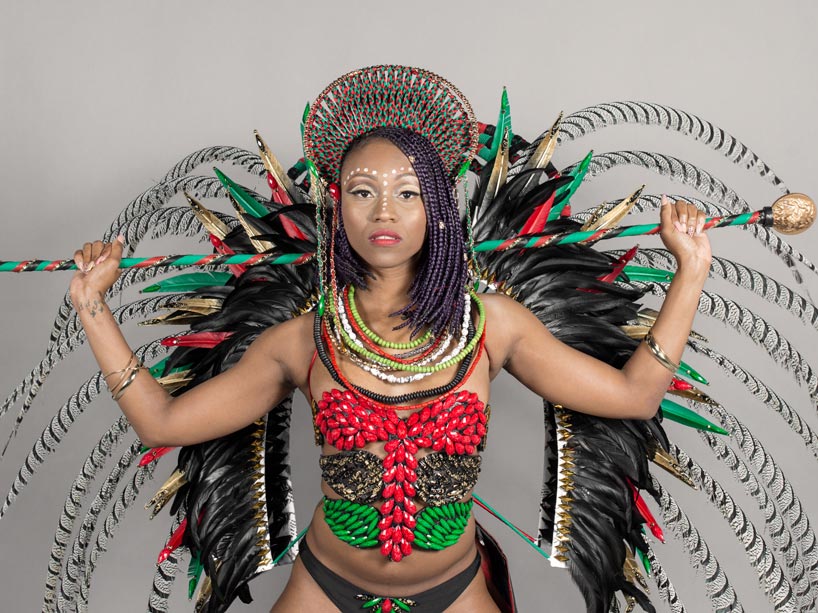
Bloodline, a reference to ancestral blood, is one of the subthemes of this year’s SugaCayne Designs. Photo credit: Peter Parker.
Inspiration can strike around any corner—especially if that corner’s at Ryerson. That’s where Dwayne Dixon first spotted the 3D printer that changed the course of SugaCayne Designs, the company he and his wife, Candice, cofounded nine years ago to design carnival costumes for festivals around the world.
“Dwayne happened to be taking a tour of the DMZ in 2016,” recalls Candice. “He was shown a 3D printer and started asking about the technology and when he came home, he said, ‘Maybe we could change the game and we could introduce digital technology into our costume design’.”
The couple met with several Ryerson zones before connecting with the Design Fabrication Zone (DFZ) long distance while they were in Trinidad in 2017 working with Douglas John, a world-renowned carnival costume designer who is a mentor of Candice’s.
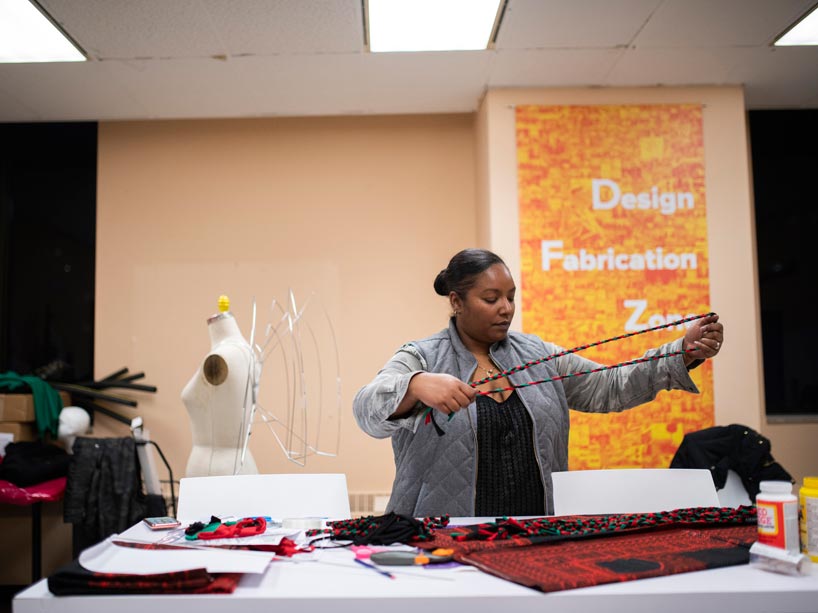
SugaCayne Designs co-founder Candice Dixon with traditional African Dashiki wax-dyed fabric for the Bloodline costume.
“The first few conversations we had with the DFZ were over Skype in Trinidad in a feather room,” says Candice, laughing. “It was really cool for them to see us in the element, and for us to be discussing how to take this art form to the next level.”
And that they did, creating two seasons of spectacular costumes that have been featured on Breakfast Television, CP24, the Design Exchange and the Royal Ontario Museum, as well as the Toronto Caribbean Carnival’s Grand Parade (scheduled for August 3).
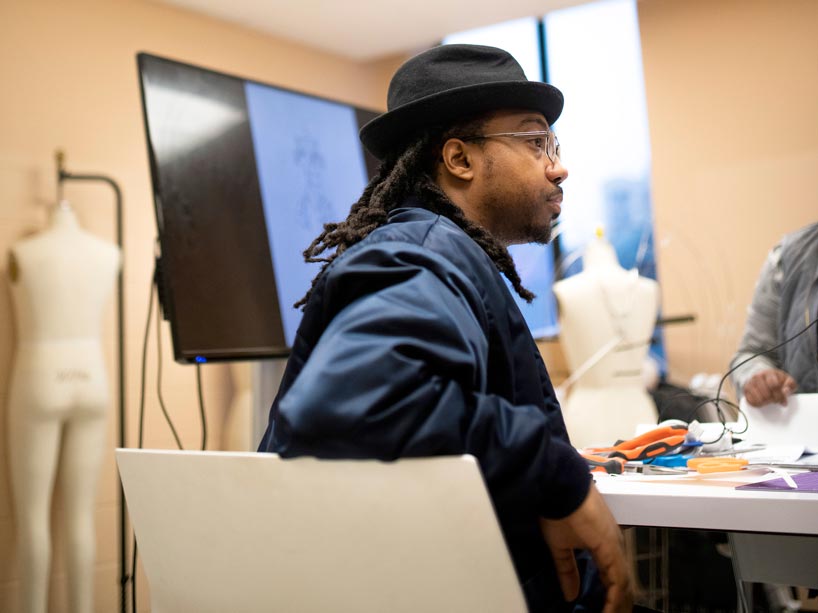
SugaCayne collaborator Quentin VerCetty making Carnival costumes in Ryerson’s Design Fabrication Zone. Photo credit: Jalani Morgan.
Now, in their third season of collaboration with the DFZ, SugaCayne is taking carnival costuming to even greater heights, using 3D printing, laser cutting, and “Worbla,” a thermoplastic modelling material used in cosplay, to create costumes for the 21st century.
“This year is going to be their most ambitious yet,” says Andrew Jepson, technical coordinator at the DFZ. “We are tackling more themes and building more costumes, many of which are going to require new materials and processes that haven’t been used to make costumes before. Not only do these pieces have to look spectacular, they also need to be lightweight, durable and breathable so that performers can be comfortable wearing them for hours on end in the hot summer sun.”
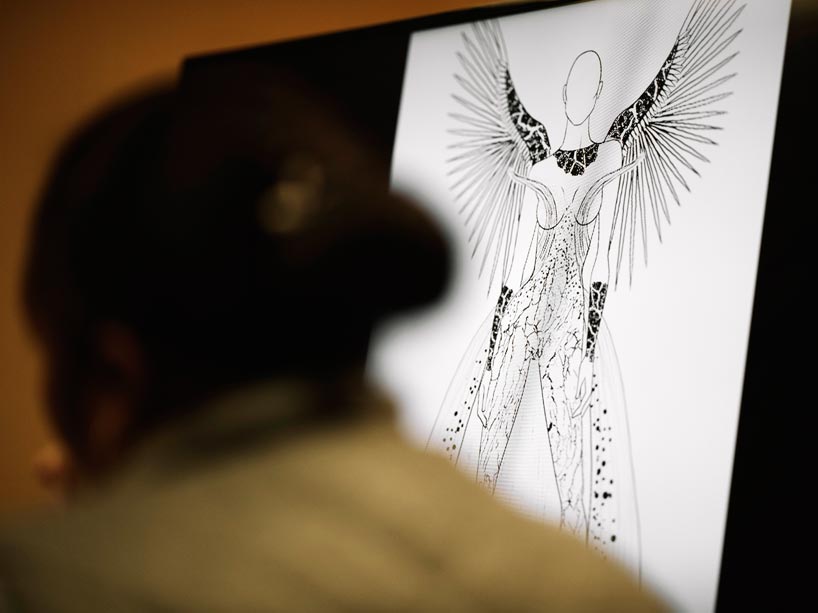
A drawing of a costume called Molten Rock, dedicated to the people of the island of Montserrat that was ravaged by a volcano in 1995. The costume honours the resilience of the residents who have been rebuilding and moving back in the past 10 years, and represents a phoenix rising from the ashes of the molten rock. Photo credit: Jalani Morgan.
Each year, students, staff and faculty mentors from engineering, architecture, fashion and other disciplines contribute to the process.
“The students help SugaCayne push into uncharted territory—from the initial hackathons we run at the DFZ, conceptual drawings, making 3D computer models and using digital fabrication equipment alongside traditional handcraft,” says Jepson. “And then they work to make those concepts a reality.”
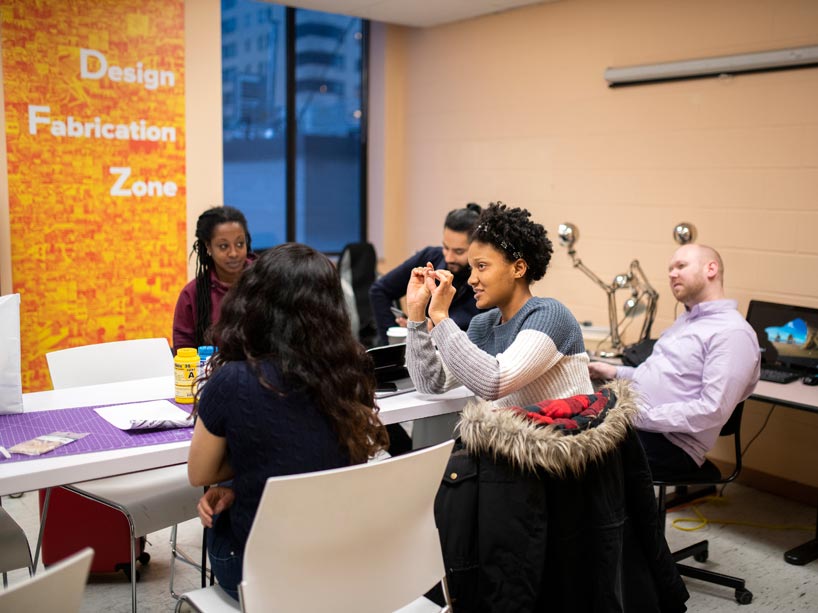
The collaboration between SugaCayne and the DFZ has been such a success, there are preliminary discussions taking place about how to make carnival arts a credited course at Ryerson. Photo credit: Jalani Morgan.
This year, those concepts revolve around the theme of “Liquid Courage,” which has a number of connotations, says Dwayne. “Some people need to have a bit of ‘liquid courage’ to put on a carnival costume,” he says, laughing.
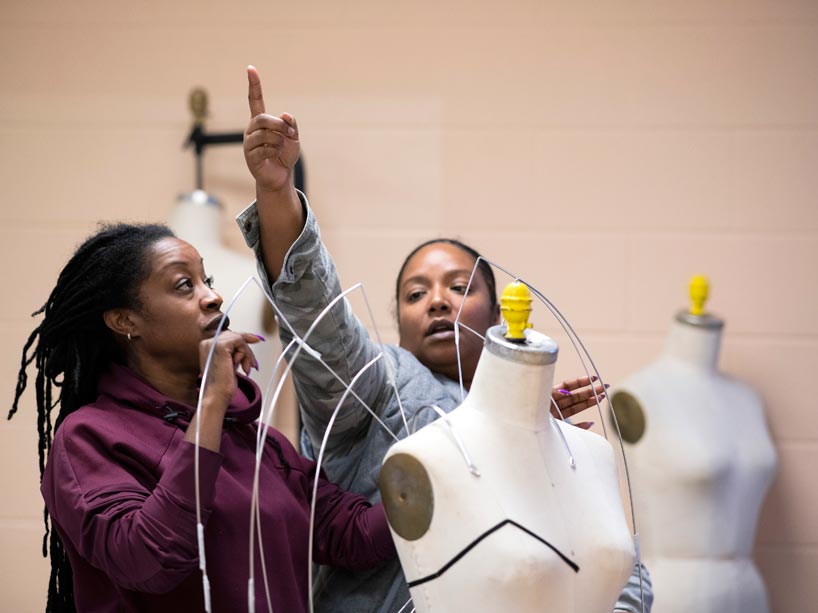
Asha Emmanuelle (left) and Candice Dixon craft costumes on the theme of “Liquid Courage.” Photo credit: Jalani Morgan.
“We’re looking at liquid as power and energy, and coming from nature,” adds Candice. “When you think about the Caribbean and the islands and the history of Carnival itself, we’re surrounded by water, and we want to infuse that feeling into our project this year.”
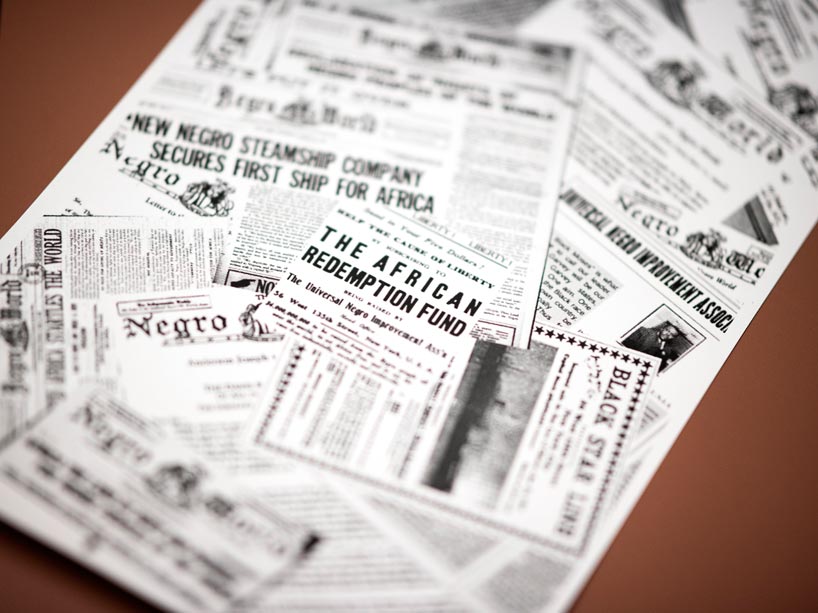
Historical news clippings are part of a costume called Bloodline that pays homage to our ancestors, says Candice Dixon. Marcus Garvey was a Jamaican civil rights leader that moved to Harlem in the 1930s and started the first widely published African American newspaper called The Negro World. SugaCayne printed the clippings on the fabrics for the costume. Photo credit: Jalani Morgan.
The central Liquid Courage theme is brought to life by costumes depicting five subthemes—mountain dew, molten rock, iridescent bubbles, liquid mercury and bloodline.
“Blood as a liquid that ties everything back to the Motherland, and the reason why we celebrate Carnival in the first place,” explains Candice. “Our ancestors were brought over to the Caribbean islands from Africa and they would watch their masters having these grand balls around Lent and they wanted to be involved but they were never allowed to be, but once they were emancipated they were able to create their own celebration, which ended up becoming Carnival. We always want to pay homage to that.”
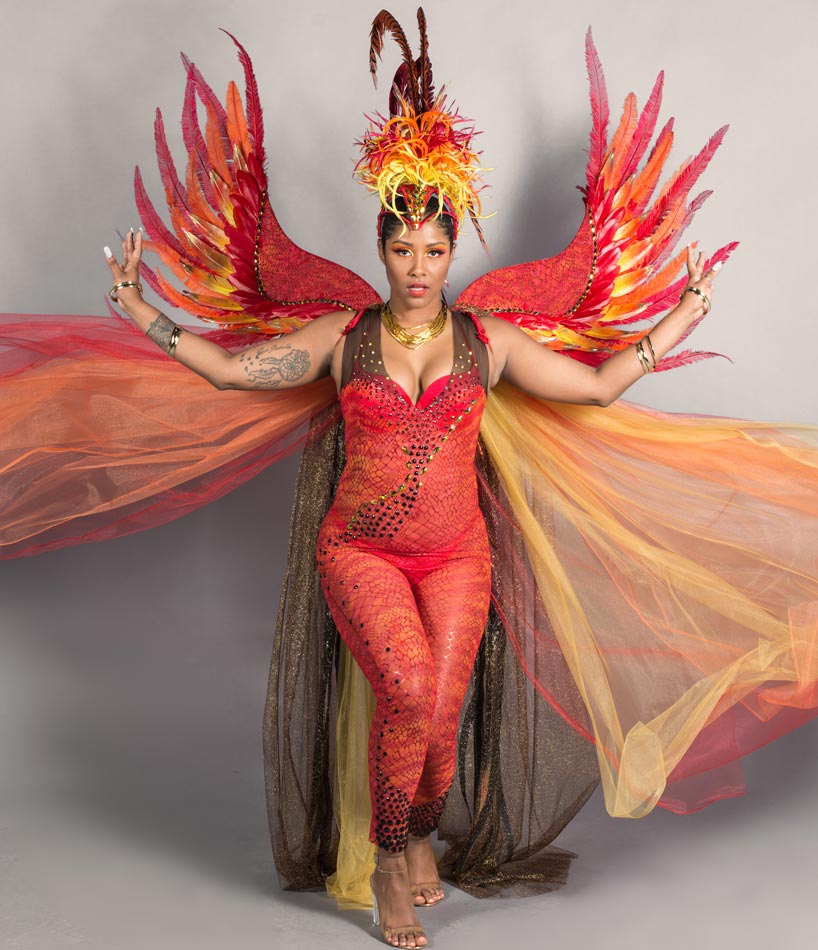
Another subtheme, Molten Rock is dedicated to the island of Montserrat and is meant to resemble a phoenix rising from the ashes. Photo credit: Peter Parker.